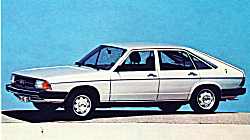


General Motors Co. is considering a rotary engine for the second generation Chevrolet Volt. In an interview with Inside Line, Karl Stracke, GM's vice president of global engineering, said that the range-extending gasoline engine in the next-gen Volt will be smaller than the 71hp 1.4-liter inline four-cylinder in the 2011 Volt. Stracke shared about the company‚ strategy to pick a rotary engine or a two-cylinder (gas) engine producing 15-18 kW (20-24 hp. He explained that rotary may have a higher fuel consumption but that its round packaging is an advantage. He said that a single-rotor engine could be enough. He also cited that the Mazda RX-8 is the only current-production rotary-engined car and it uses the two-rotor Renesis engine. Of course, the Volt has needs that are quite different from the RX-8. Stracke noted that with the higher rpm of a rotary, there has to be an NVH (noise, vibration and harshness) solution. He also revealed that for the next generation of GM hybrids, a diesel engine is being considered. The issue with this is that diesel has a higher materials cost but then consumers would have lower fuel costs.
If GM hopes to reach the same level of mainstream success with the Volt as Toyota has accomplished with its Prius hybrid, it's extremely important to cut costs in future generations. Stracke says the cost of the 2011 Volt's battery pack is "roughly $10,000" and that GM is "working aggressively to get that cost down 50 percent" for the next Volt.
"The future of the automobile has never been as interesting as it is right now," said Stracke. "Big question is, what new propulsion system will come next?"
Moller invents compound rotary engine, in which the two rotors act in series instead of parallel, causing the first rotor to act like a super charger / turbo charger, compressing the air while being pushed by exhaust gases:!!!!!!!!!!!!!!!!!!!!!!!!!!!!!!!!!!
Major increase in efficiency, cooler exhaust, and no need for a catalytic converter.
According to a recent interview with Karl Stracke, the new VP of Global Vehicle Engineering, GM is looking at the current drivetrain choice for the Volt much more critically. The intent of the Volt is to complete with the Toyota Prius but, with a battery pack that costs close $10,000 to replace, it won't be able to do so successfully. Especially considering that even after the $7,500 tax credit, the effective price of the Volt is close to the $30,000 mark.
GM's answer to this is swapping out the current 1.4 liter internal combustion engine with a smaller rotary powerplant. The choice was made because rotary engines are well known for making more power by volume than traditional internal combustion engines. Even though they are also known for using more fuel, reducing the displacement should be able to offset this. The use of a single rotor has also been discussed.
Another possibility that is apparently being tossed around by GM's Engineers is making use of a two cylinder petroleum engine in place of the inline-4. GM has tested such a motor already, and was able to coax up to 25 horsepower out of the little guy.
The use of a diesel engine was also brought up, but this would increase the overall cost of the drivetrain. That isn't to say it will never happen, but for the next generation of the Volt it is highly unlikely.
As of now, General Motors is still planning on having the first generation Volts onto the showroom floors by the end of this year. However, with the second generation already in the works and looking to be better than the first, the initial round of sales may suffer just a bit.

2 comments:
الله عليك يا ملك نسلم ايديك عالدعوه الحلوه والموضوع الممتاز
thanks alot ahmed
!!!!!!!!!!!!
Post a Comment